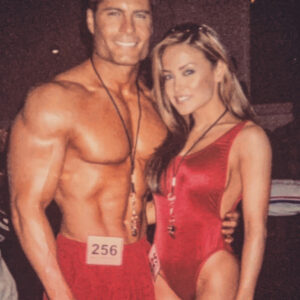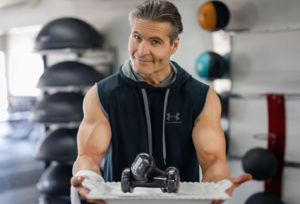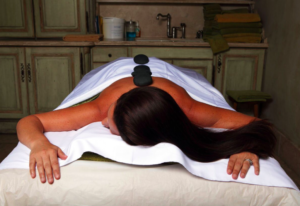
A Strong Mind for a Strong Body
This post shares my wife’s inspiring health journey as she transformed from near destruction to wellness through natural remedies and smart training techniques.
By Julia Turk:
Celebrating my 33rd birthday was a challenge. I found it hard to enjoy life when my body felt like it was 93. Every part of me ached, and I felt so fragile that even the slightest movement could lead to disaster.
One of the toughest moments was watching my thick hair fall out in clumps—a problem so severe it began to affect our condo’s plumbing!
After some convincing from my husband John, I underwent blood tests and a bone scan, which my doctor initially hesitated to order because of my age. Despite my low back pain and a family history of osteoporosis, the scan revealed I had Osteopenia in my spine and hips. I left the doctor’s office with a prescription meant for someone much older, and almost immediately, I felt worse—my joints ached, especially my jaw.
John, a passionate health professional, took my situation personally. He was determined to help me heal in a way that worked with my body, not against it. He warned me that his approach wouldn’t be as easy as popping a pill; it would require changing the bad habits and mindsets that had led me to this point.
As a swimwear model, I had adopted a strict exercise routine and diet to maintain my figure, which delivered immediate results but ultimately took a toll on my muscle growth, bone strength, and overall health. By age 33, I was exhausted, unfocused, emotionally drained, and struggling to sleep. My body was rebelling against the caffeine-fueled nights and nutrient-poor diet I had imposed on it. My doctor advised me to gain twenty pounds to build bone density, which terrified me given my petite four-foot-eleven frame.
John reassured me that he would help me find a better path. A few days later, he introduced a creative holistic plan: we would ‘trick’ my body into believing it had gained weight by wearing a weighted vest while doing chores and climbing stairs. I worried that it would overwhelm my fragile frame, but surprisingly, I felt better every time I wore it. This was the start of my hope for change.
I refused to gain weight but complied with my doctor’s orders to take Calcium Citrate pills. Strangely, my calcium levels showed no improvement despite my efforts. It turned out my body needed calcium from food sources. I began incorporating Greek yogurt, rich in calcium and probiotics, and added Magnesium Glycinate, Phosphorus, and Boron to help with absorption.
Since I loved vegetables, John suggested squeezing lemon over my spinach to neutralize oxalic acid, which can hinder calcium and iron absorption. After discovering low vitamin D levels, my doctor prescribed a large weekly dose, but John wisely adjusted it to a smaller daily dose to avoid overtaxing my system.
He encouraged me to take weight-bearing activities seriously, emphasizing the importance of safe, effective heavy lifting—not for aesthetics, but to stimulate bone growth. Although I had always gravitated towards a leaner appearance, I realized I needed to reframe my understanding of muscle. It’s essential for a healthy body, longevity, metabolism, and immune function in everyone.
I started to reflect on what I consumed. John emphasized that it was more important to remove harmful elements from my diet than to simply add new ones. I began asking myself tough questions: What purpose does this food serve? Does it build me up or tear me down? I realized my Diet Coke habit had to go, as phosphoric acid disrupts the balance of phosphorus in the body, negatively affecting calcium levels.
Replacing that habit with something nourishing, I switched to hot lemon water, which supports my nerves, kidneys, and bones. Lemon water helps cleanse the kidneys, crucial for calcium balance. Additionally, I learned that parsley is also great for kidney health.
Another key element of my recovery has been prioritizing sleep and managing stress. I’ve come to understand that ignoring these aspects could lead to damaging cortisol spikes. With spiritual guidance, I’m learning to approach life with peace and discernment rather than fear or obligation. This journey has helped me let go of the need to please others, allowing me to embrace a lifestyle focused on inner peace and balance.
Trust has always been a challenge for me. I used to believe that if I wasn’t in control, everything would fall apart. While this mindset served me for a time, it nearly destroyed me.
I had to confront difficult questions: Do I believe my worth is tied to being skinny? Is my ultimate goal simply to be thin? Skeletons may be skinny, but what I truly desire is health, vibrancy, thoughtfulness, and beauty.
This reflection led me to redefine beauty: it’s not about hitting a specific weight but rather feeling confident, enjoying healthy skin, hair, and teeth, maintaining youthful posture, stamina, and flexibility. It’s about the connections I foster with others; when I’m healthy, I can be compassionate and empathetic. When I’m not, I’m often consumed by self-pity. Focusing too much on a ‘perfect’ weight diminishes my quality of life, creating a shallow existence that feels unbearable.
When John suggested changes to my diet, I struggled to let go of my old habits, especially with peers who didn’t support my success. I had to remind myself: Would my loving husband really jeopardize his reputation and our marriage just to make me gain weight? Realizing this made it clear that my emotional history was distorting my perspective.
God has blessed me with incredible resources and knowledgeable people who genuinely care about my health and longevity. I’m learning that wisdom involves acknowledging what I don’t know and trusting those who do. Healing is not a solitary journey; we thrive when supported by those worthy of our trust.
My Advice for Anyone Facing Health Challenges:
- Take Responsibility: You hold the power to change your life.
- Face the Truth: Confronting your issues will help you overcome obstacles and find success.
- Seek Trusted Professionals: Choose those who align with your values.
- Embrace Change: Allow yourself the grace to adapt, even if it feels uncomfortable.
- Trust the Process: Relax and let things unfold.
- Focus on Your Goals: This journey is about longevity and harmony, not perfection.
- Celebrate Small Wins: They accumulate into significant achievements.
Life is a series of moments—be present and enjoy the journey. If you don’t, you risk wasting your life.
Warm wishes from your fellow health warrior,
Jules
*I thank God every day for John Turk; not only is he an amazing husband, but I believe his wisdom saved my life.
For more encouragement, visit my website: www.AbbasHeart.net or my youtube channel @JuliaShalomJordan.














